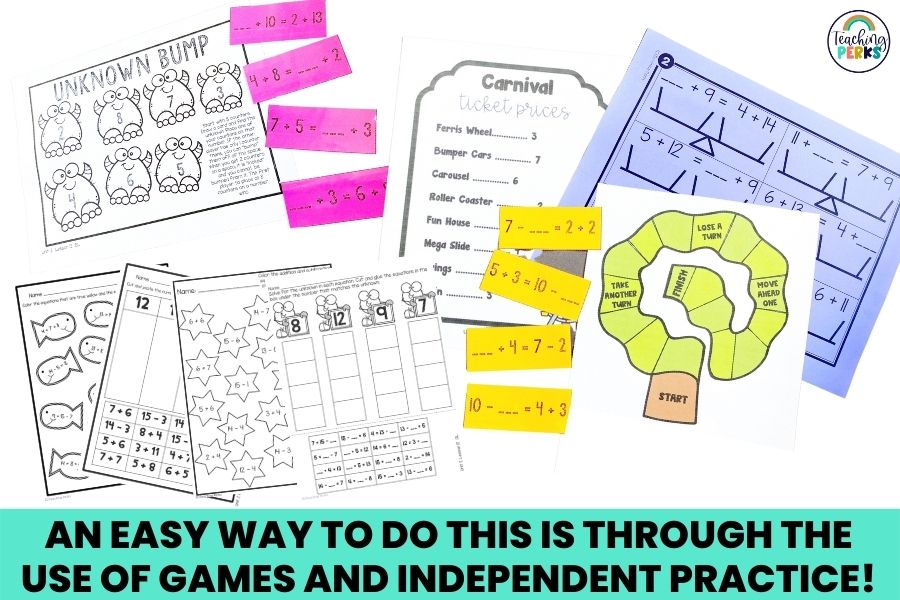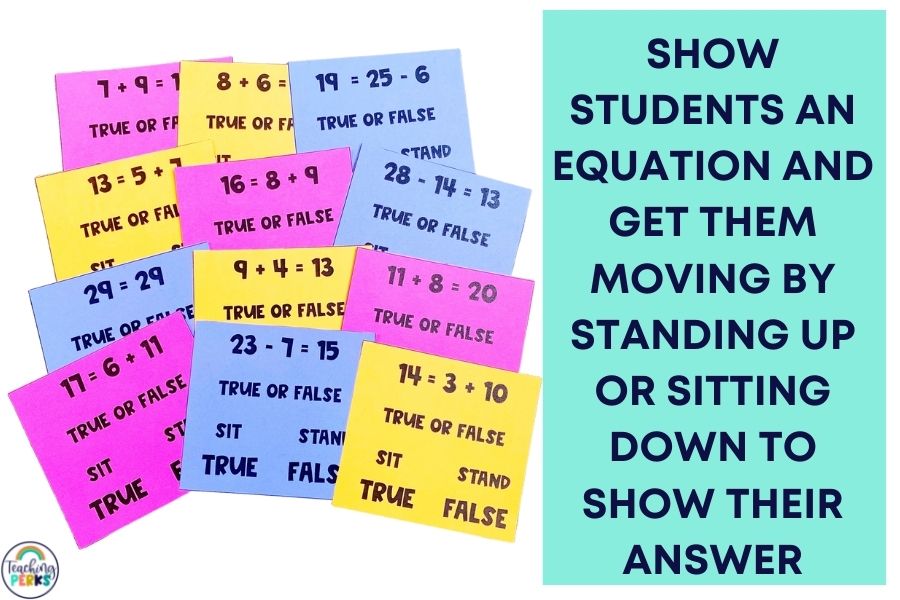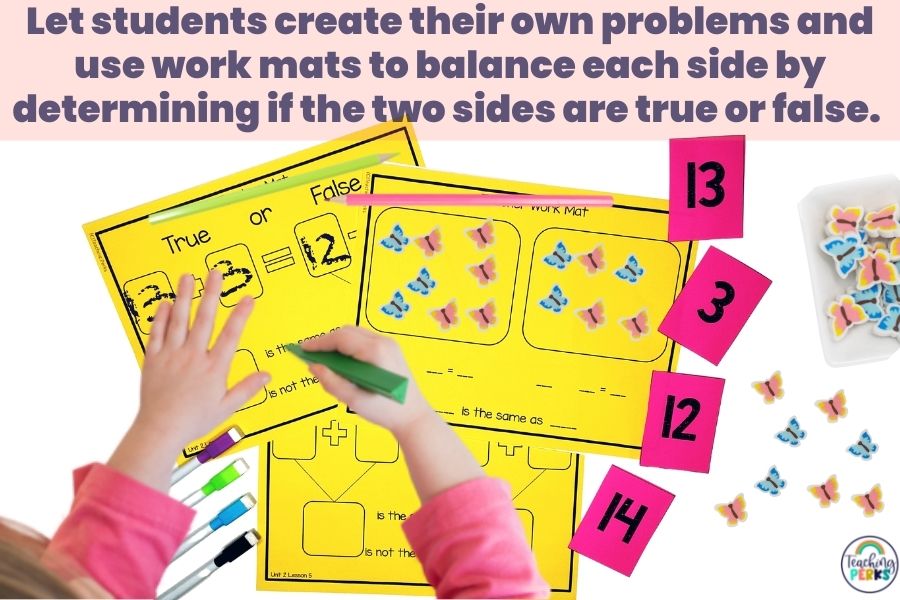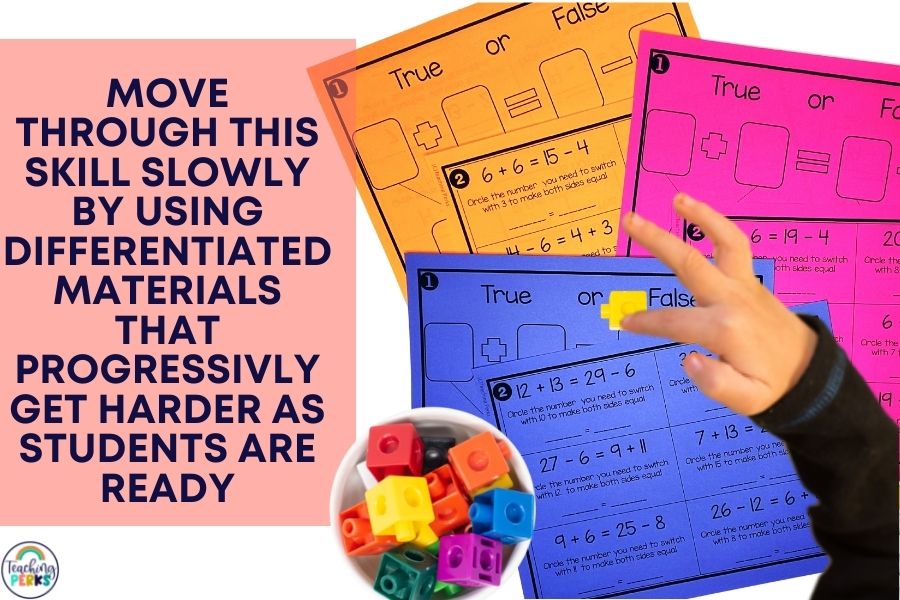Learning how to balance equations in math is an important skill. Not only does it help your students understand the role of the equal sign, but it also prepares them for more difficult math topics in the future such as solving for unknown numbers or a missing value in an equation! Let’s talk about a balanced equation and how to teach this important skill!


Building on Previous Knowledge
The best way to teach how to balance equations in math is to build on what students already know. This concept is all about adding and subtracting, so the first step should be a review of these skills.
Another way to introduce this topic is to talk about how many different ways there are to get the answer to a problem. For example, 2+3=5, but so does 1+4! Using the story 12 Ways to Get to 11 could be a good segway into this new skill.

Additionally, you could give this skill a visual component by getting out a balance scale. Practice weighing different items on each side of the scale, and then teach the importance of the equal sign by explaining that the only way to balance the scale is if both sides are equal to each other.
How To Balance Equations in Math
Learning how to balance equations in math is all about honing their skills in addition and subtraction. First, give students a full equation and have them do the addition equations or subtraction equations themselves. Then, have them check their work to see if the number is the same on both sides of the equal sign. This will help them gain a conceptual understanding of the meaning of the equal sign.

Then, before sending students off to create a balanced equation on their own, practice as a class with a fun game!
One of the games in my Understanding the Equal Sign and Balancing Equations bundle is a series of true/false questions for students to answer. You can place a new equation on the board and, following the same idea as mentioned above, have them solve the addition or subtraction problem. Then they will either sit or stand depending on whether the equation is equal or not. This is another great way to help them understand the power of the equal sign.

Balance Equation Practice
When teaching how to balance equations in math, it is important to practice this new skill through independent and small group practice! You can have them practice creating their own problems to solve that have equal parts on each side of the equal sign.

Additionally, scaffolding is important to practice balancing an equation. Start with just addition or just subtraction, then work your way up to mixed and/or solving a problem on both sides of the equation!
A fun way to practice this skill is by using a Kahoot! game. This Balanced Equations game gives students a problem on both sides of the equation to solve, then they will answer whether it is balanced or not on their own screen. There is a limited amount of time for each question in this game, so this could be a good option near the end of the unit, as a review, or to challenge above-level students in a small group.
Learning to Balance Equations in Math
Although this skill may seem simple, it takes a lot of building and scaffolding for students to master. By taking it slow and practicing the different types of equations, your students will be well on their way to balancing equations like a pro!

If you want an easy-prep way to teach this concept, check out my Understanding the Equal Sign and Balancing Equations bundle! This First Grade math unit comes with daily lesson plans, word problems, games, and individual practices for each day of the unit; you will have plenty of content to teach and practice this new concept!
Don’t forget to subscribe to the blog for more first-grade math content!
If you liked this post on teaching students to balance equations in math, you may also like these lessons:
Don’t forget to sign up for the freebie!!!
Leave a Reply